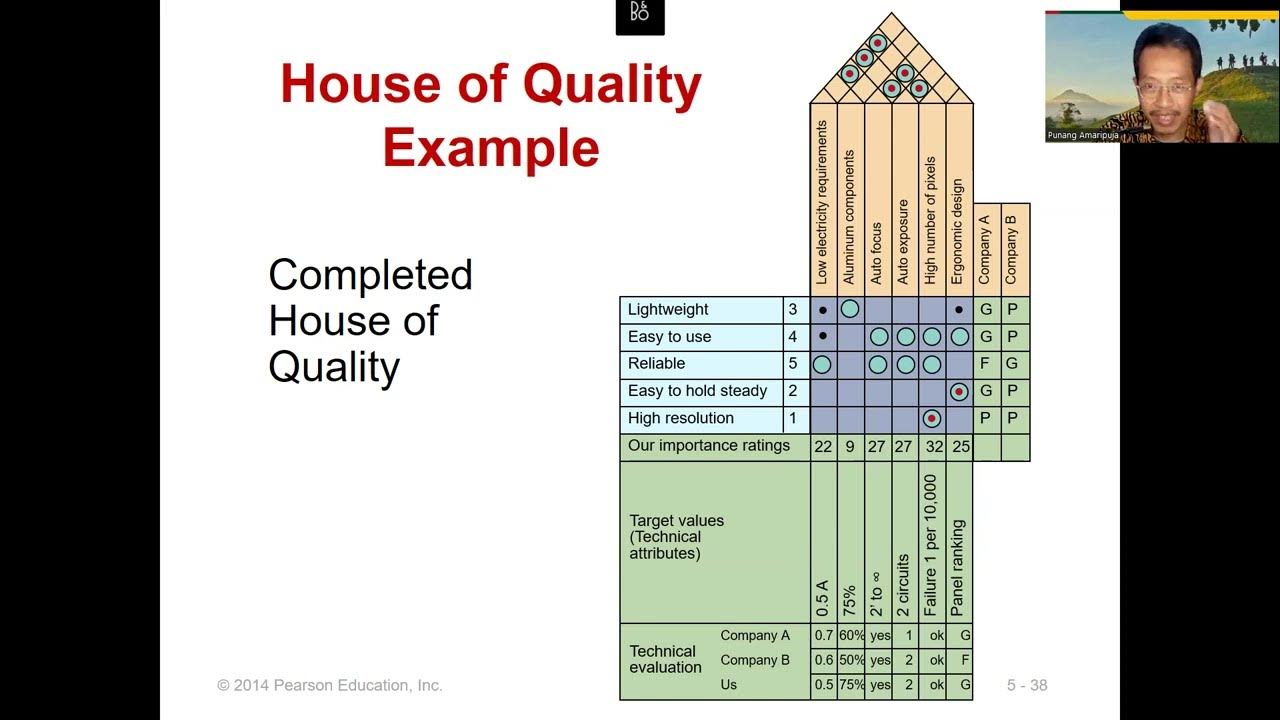The Kano Model Explained
Summary
TLDRThe video explains the Kano Model, a tool for prioritizing product features based on customer satisfaction. It discusses five types of features: must-have, performance, delight, indifferent, and reverse. Must-have features are essential but don't delight; performance features increase satisfaction; delight features surprise and please customers; indifferent features don't matter, and reverse features annoy. The video walks through a five-step process to gather customer feedback, categorize features, and prioritize them, helping product managers make informed decisions to improve customer satisfaction and product success.
Takeaways
- 📝 The Kano Model helps product managers prioritize features based on customer satisfaction to enhance the product's success.
- 🎯 The model uses two axes: whether a feature is present or absent and how customers react (dissatisfied to delighted).
- 🚦 Features are categorized into five types: must-have, performance, delight, indifferent, and reverse features.
- 🔑 Must-have features are basic requirements; their absence leads to dissatisfaction, but their presence doesn't delight.
- 📈 Performance features increase satisfaction proportionally as their functionality improves (e.g., bigger beds or better TVs in hotels).
- 🎉 Delight features surprise and please customers but are not expected; their absence doesn’t cause dissatisfaction (e.g., a room upgrade).
- 😐 Indifferent features don't impact customer satisfaction, whether present or absent (e.g., a rug in a hotel room).
- 🔄 Reverse features cause dissatisfaction when present but satisfaction when absent (e.g., having to queue for breakfast).
- ⏳ Over time, delight features may become performance or must-have features due to habituation (e.g., TVs in hotel rooms).
- 📊 The Kano Model process involves selecting features, surveying customers, categorizing responses, collating data, and prioritizing based on feature type.
Q & A
What is the main purpose of the Kano model in product development?
-The Kano model helps product managers prioritize features based on how much they will delight customers, ensuring that customer satisfaction is at the core of product development.
Who developed the Kano model and when?
-The Kano model was developed by Dr. Noriaki Kano, a professor of quality management from Tokyo University, in the 1980s.
What are the two axes used in the Kano model to evaluate features?
-The x-axis represents whether the feature is absent or present in the product, and the y-axis represents how the customer responds to the feature, ranging from dissatisfaction to delight.
What are 'must-have' features in the Kano model, and how do they affect customer satisfaction?
-'Must-have' features are basic requirements that customers expect. If present, customers feel neutral, but if even one is absent, they become very dissatisfied.
What are 'performance' features, and how do they influence customer satisfaction?
-'Performance' features improve the product's functionality. The more a customer gets of these features, the more satisfied they will be. If these features are absent, customers will be slightly dissatisfied.
What are 'delighter' features, and why are they important in product development?
-'Delighter' features are unexpected elements that significantly increase customer satisfaction when present. However, their absence does not lead to dissatisfaction because customers do not expect them.
What are 'indifferent' features in the Kano model?
-'Indifferent' features are those that customers don't care about. Whether they are present or absent, customers remain neutral.
What are 'reverse' features, and how do they impact customer satisfaction?
-'Reverse' features are those that annoy customers if present, but make them happy when they are absent. These features should be removed from the product.
What is habituation in the context of the Kano model?
-Habituation refers to how a customer’s perception of a feature changes over time. Features that once delighted customers may eventually become performance features and later, must-have features.
What are the five steps to use the Kano model for feature prioritization?
-The five steps are: 1) Select the features to consider, 2) Survey customers using functional and dysfunctional questions, 3) Categorize each answer using a Kano table, 4) Collate the data, and 5) Prioritize the features based on the survey results.
Outlines

Cette section est réservée aux utilisateurs payants. Améliorez votre compte pour accéder à cette section.
Améliorer maintenantMindmap

Cette section est réservée aux utilisateurs payants. Améliorez votre compte pour accéder à cette section.
Améliorer maintenantKeywords

Cette section est réservée aux utilisateurs payants. Améliorez votre compte pour accéder à cette section.
Améliorer maintenantHighlights

Cette section est réservée aux utilisateurs payants. Améliorez votre compte pour accéder à cette section.
Améliorer maintenantTranscripts

Cette section est réservée aux utilisateurs payants. Améliorez votre compte pour accéder à cette section.
Améliorer maintenantVoir Plus de Vidéos Connexes

Dan Olsen "How to Create Your Product Strategy" at the 2018 NYC Product Leader Summit

Kepuasan Konsumen

House of Quality (QFD) || Dr Punang Amaripuja Serial Operasi dan Teknologi - MOT 05B

Conjoint Analysis Explained (Understand in Under 5)

Strategi baru dalam pengembangan bisnis (4p - 4c) #111

Value Proposition Canvas Explained
5.0 / 5 (0 votes)
